4 Likes
2 Comments
Unbeknownst to me, there's already a company called Lilium selling all-electric vertical take-off and landing (eVTOL) jets, and is already selling them commercialy. They just announced sale of 12 jets to GlobeAir to provide flights in the French Riviera and Italy.
"The proprietary technology at the core of the Lilium Jet is Ducted Electric Vectored Thrust (DEVT) which we have refined through successive generations of aircraft demonstrators. Electric jet engines integrated into the wing flaps provide advantages in payload, aerodynamic efficiency and a lower noise profile, whilst also providing thrust vector control to manoeuvre the Lilium Jet through every phase of flight."
"Traditional jet engines power 95% of commercial aircraft and we have based our design on the same principles, yet far simpler. Our electric jet engines rely on just a single 'stage' rotor/stator system driven by an electric motor with zero emissions."
"The Lilium Jet can adapt for a range of customers and uses, with each configuration optimized for an unparalleled experience. The most spacious cabin arrangement is designed for private flights, with luxurious club seating. Alternatively, the cabin can be configured with 6 seats for passenger flights, or without seats to serve the zero-emissions logistics market."
"Lilium is one of the only pioneers in eVTOL seeking dual certification with EASA and FAA. Since 2015, we've designed, built and tested 5 generations of technology demonstrators and invited the world to watch as we pioneer an aircraft and flight control system never seen before."
"The Lilium aircraft requirements can be summarised as follows: Zero operating emissions, highly efficient cruise phase, vertical take-off & landing for inner city accessibility, low noise for high frequency inner city flight operations and customer acceptance, high seat capacity to achieve attractive unit economics and affordable pricing over time, and scalability whilst maintaining ground footprint and low noise."
"The main wing-span is limited to <14 meters to enable the use of existing helipads (approximately 14,000 possible locations in the US alone). Simple by design, there are no ailerons and there is no need for a vertical stabiliser. The landing gear is fixed and there are no hydraulics. Directional stability is provided by active electronic differential thrust control. The aircraft is controlled through a fly-by-wire avionics system. The main wings generate ~60% of the lift, the canards ~20%, and the remaining ~20% is generated across the fuselage. The canards and wings are positioned as far apart as practicable, to enable the aircraft to be stable in pitch."
"The propulsion system consists of 36 individually controllable flaps, which also serve as lifting and control surfaces and each flap contains a ducted electric fan. The 36 ducted fans are embedded in a 1:2 ratio on the canard to main wing. Embedding the ducted fans into the wings eliminates the need for dedicated nacelles, reducing weight and minimising aerodynamic drag loss. The flap is rotated by an integrated servo unit, which can rotate the whole flap unit for controllability during hover and cruise flight. The flaps only receive two signals, fan speed and flap angle, by which the aircraft can be controlled throughout the flight envelope via thrust vectoring."
"The fan stage is designed to be most efficient during hover flight. In order to achieve approximately the same aerodynamic stage efficiencies during cruise flight, we make use of a variable nozzle."
The website has much more information about the aircraft.
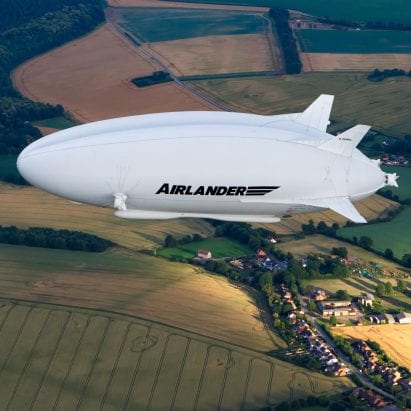
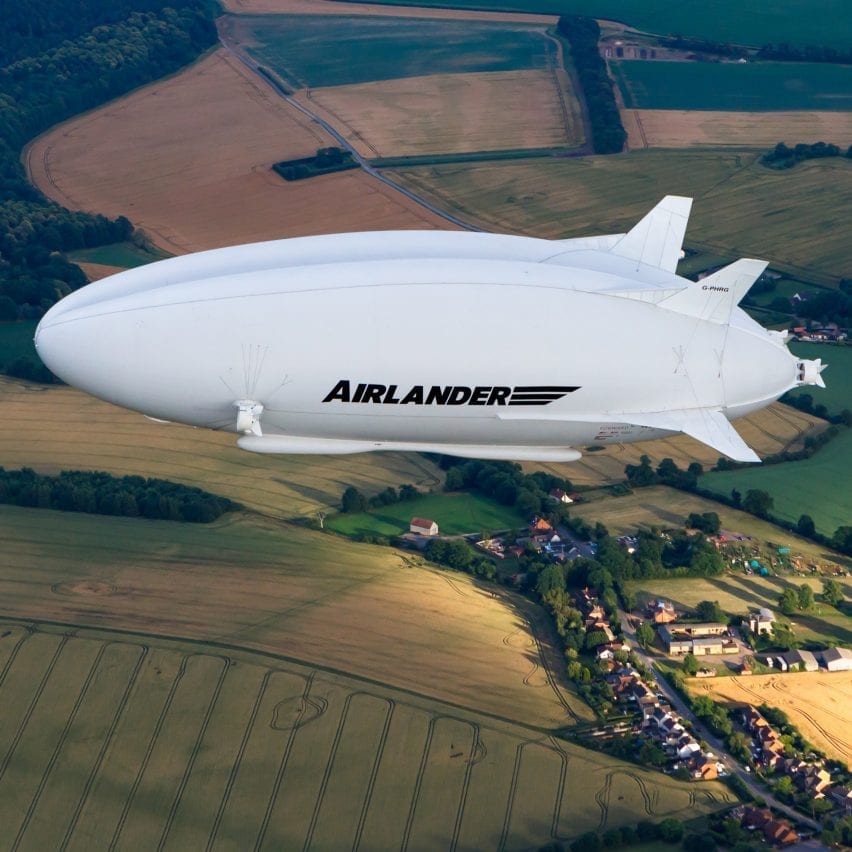
UK manufacturer Hybrid Air Vehicles has designed a hybrid-electric version of Airlander 10, an airship that could provide a less carbon-intensive alternative to short-haul flights.
Hybrid Air Vehicles (HAV), which is based in Bedford, has designed a dirigible that could take 100 passengers on popular, short routes such as Liverpool to Belfast.
The company calculates that using their airship would produce "75 per cent fewer emissions than conventional aircraft in similar roles".
The Airlander 10 went viral in 2016 when photographs released of its test flight earned it the nickname of the "flying bum". Subsequent redesigns have made it svelter and less peach-shaped.
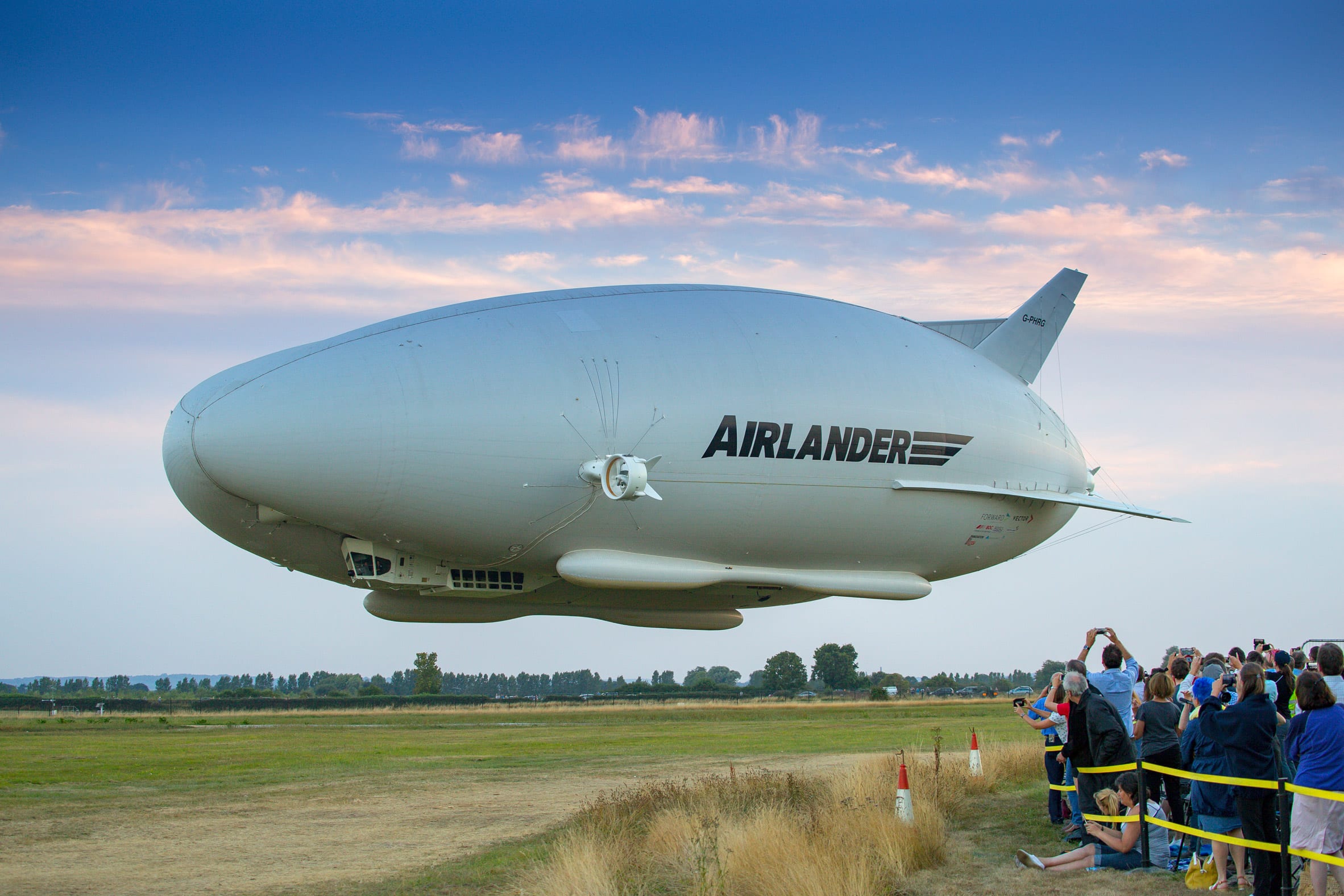 Airlander 10 went viral in 2016 when it was nicknamed the "flying bum"
Airlander 10 went viral in 2016 when it was nicknamed the "flying bum"
The hybrid-electric Airlander 10 would be filled with helium and propelled by two electric motors powered by hydrogen fuel cells at the front and two combustion engines at the rear.
"Using lighter-than-air technology means that Airlander 10 requires significantly less power to generate lift and fly," a spokesperson for HAV told Dezeen.
"Airlander 10, therefore, produces far fewer emissions even before electrification."
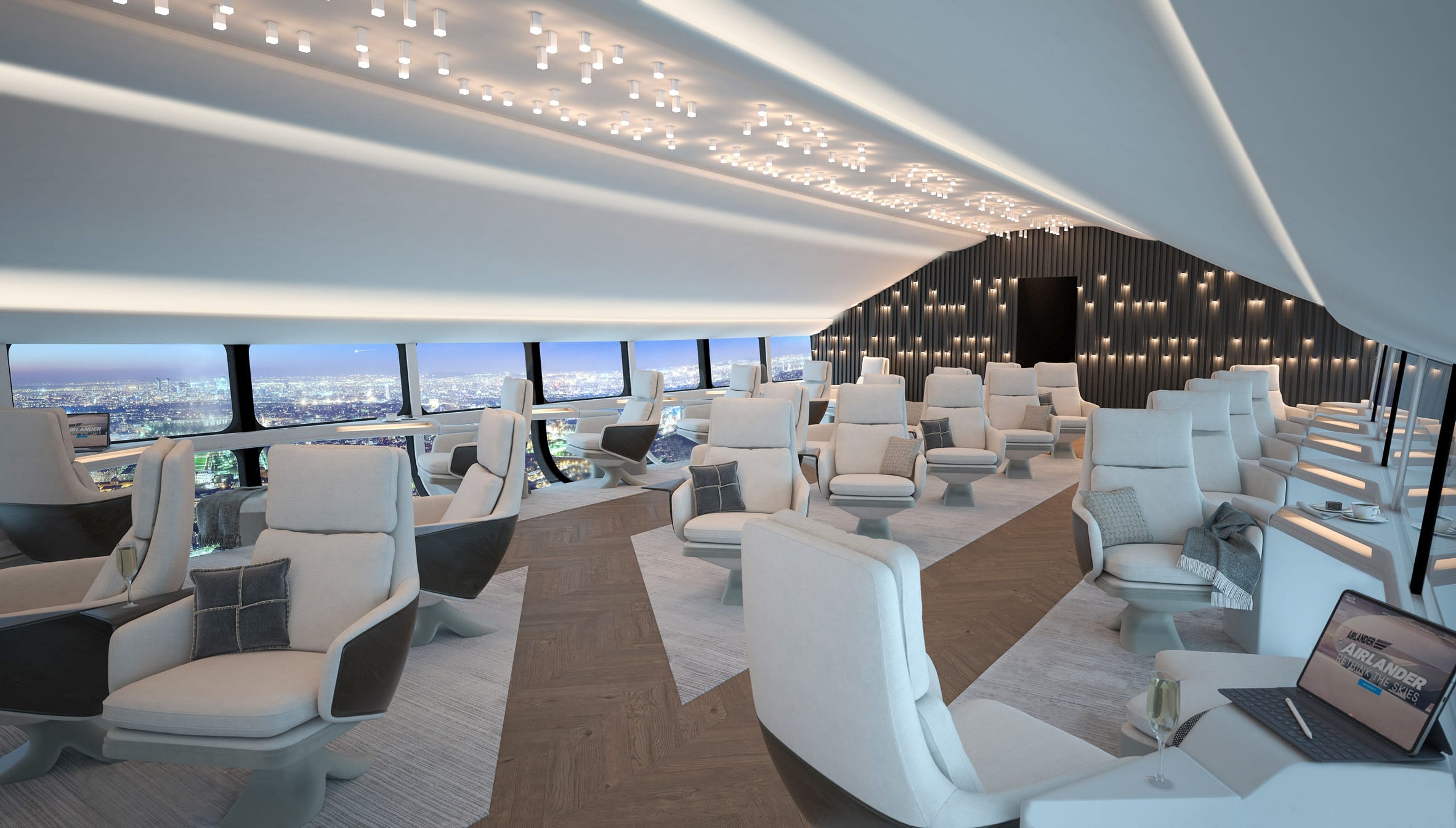 A new hybrid-electric version could have less carbon impact
A new hybrid-electric version could have less carbon impact
HAV calculates that a passenger's individual carbon impact for a flight between Barcelona and Palma de Mallorca would be 4.5 kilograms on an Airlander 10, versus 53 kilograms taking the same trip on a traditional aeroplane.
Although airships are slower than traditional fixed-wing aeroplanes, HAV pointed out that they can deliver passengers closer to their final destination as they can take off and land on any flat surface – including water.
"Over shorter routes, this is balanced by Airlander 10's ability to operate much closer to the final destination and fly point-to-point," said HAV.
"In some cases, this makes the total journal time very similar or only slightly longer but with all the benefits of comfortable travel with very low emissions."
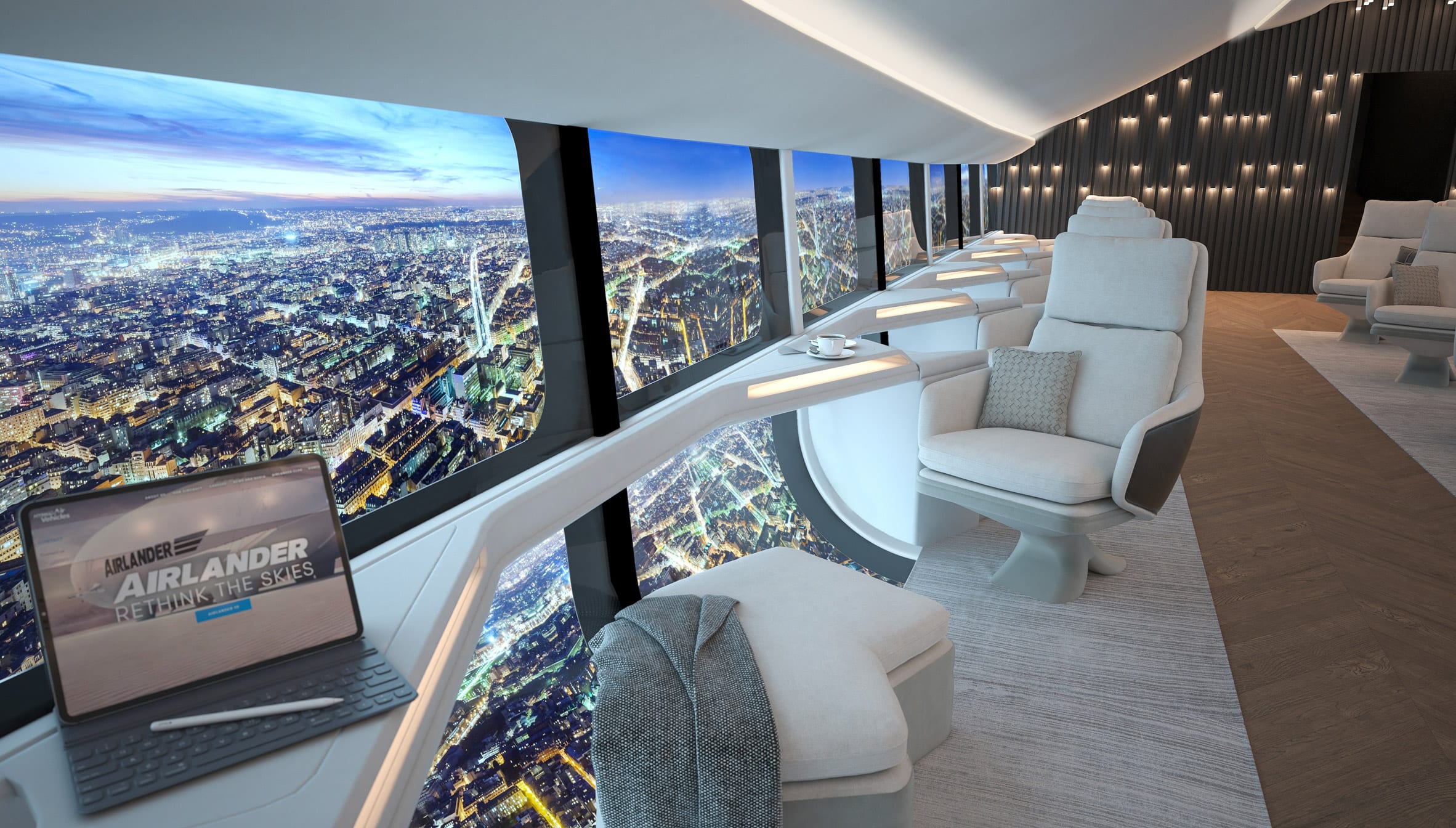 The airship could be a less carbon-intensive alternative to inter-city flights
The airship could be a less carbon-intensive alternative to inter-city flights
Aeroplanes power their engines by burning aviation fuel, which is typically petroleum-based. Jet fuel, for example, uses kerosene – a combustible hydrocarbon made from petroleum.
Filling airships with helium makes them light enough to float, as helium is lighter than air, so the engines are only required to direct the craft rather than keep it airborne.
Although helium is the second-most abundant element in the universe after hydrogen, it is a finite resource on earth because it floats away out of the atmosphere.
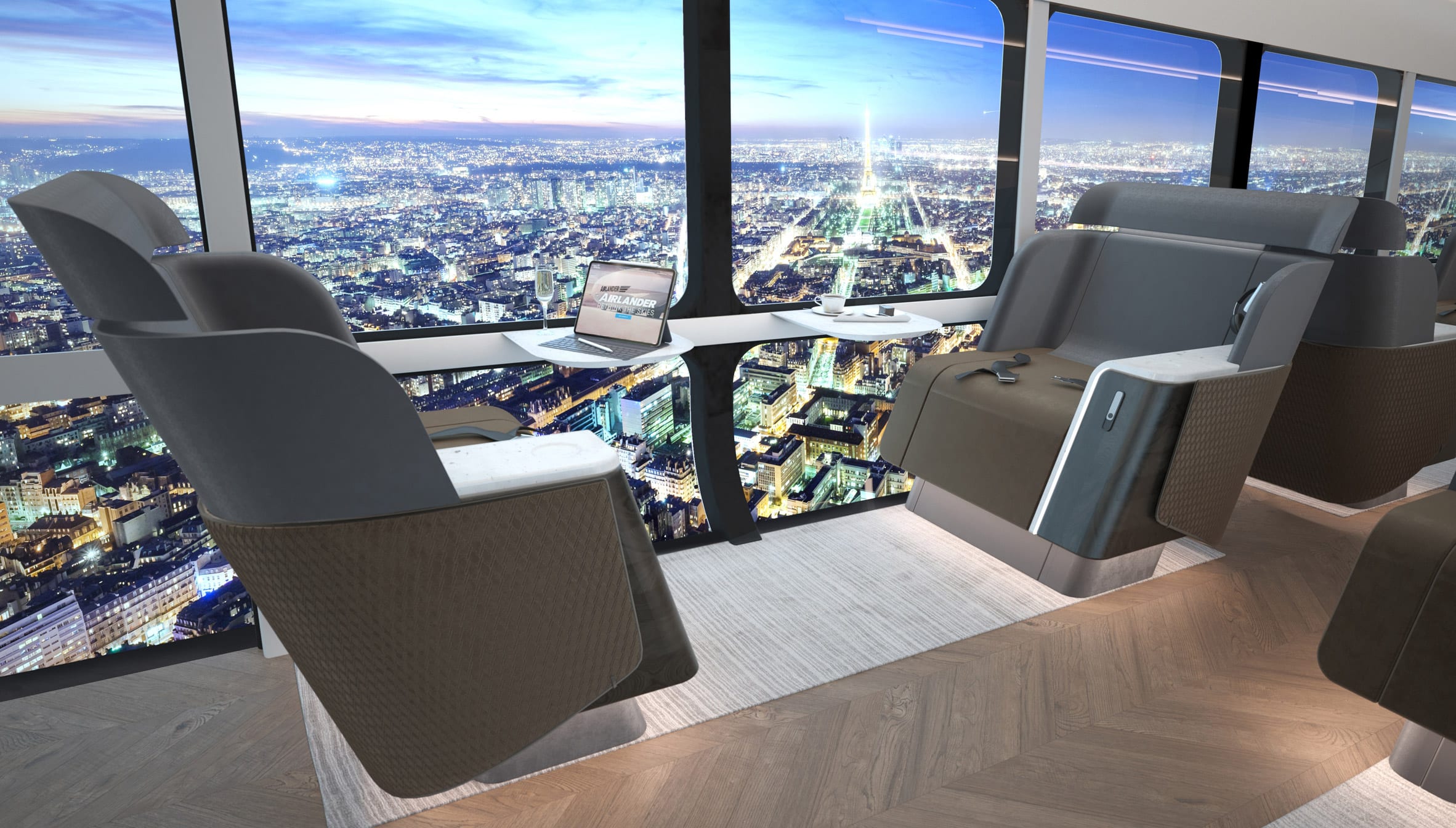 Airlander 10 would produce 75 per cent fewer emissions than a jet plane
Airlander 10 would produce 75 per cent fewer emissions than a jet plane
It is the only element on Earth that is completely non-renewable and is only generated deep underground via the radioactive decay of uranium and thorium.
However, HAV claims that Airlander 10 would not significantly deplete the planet's resources.
"Although helium is a finite resource, there are ample reserves and new helium fields are being identified now," said the company.
"Even with 600 aircraft in use in the world, Airlander 10s would make up just 1 per cent of the world's annual helium consumption."
HAV is partnering with British aviation business 2Excel Aviation to offer Airlander 10 to airlines and cruise companies.
"It is HAV's plan to produce at least 12 aircraft per year," said the company.
More low-emissions aircraft design includes these three concepts for zero-emission commercial aircraft by Airbus and a V-shaped aircraft by Dutch airline KLM and TU Delft.
The post Electric airship designed to replace short-haul plane trips appeared first on Dezeen.
#all #transport #design #news #uk #aircraft #electricaircraft #electricvehicles #airlander10theflyingbum